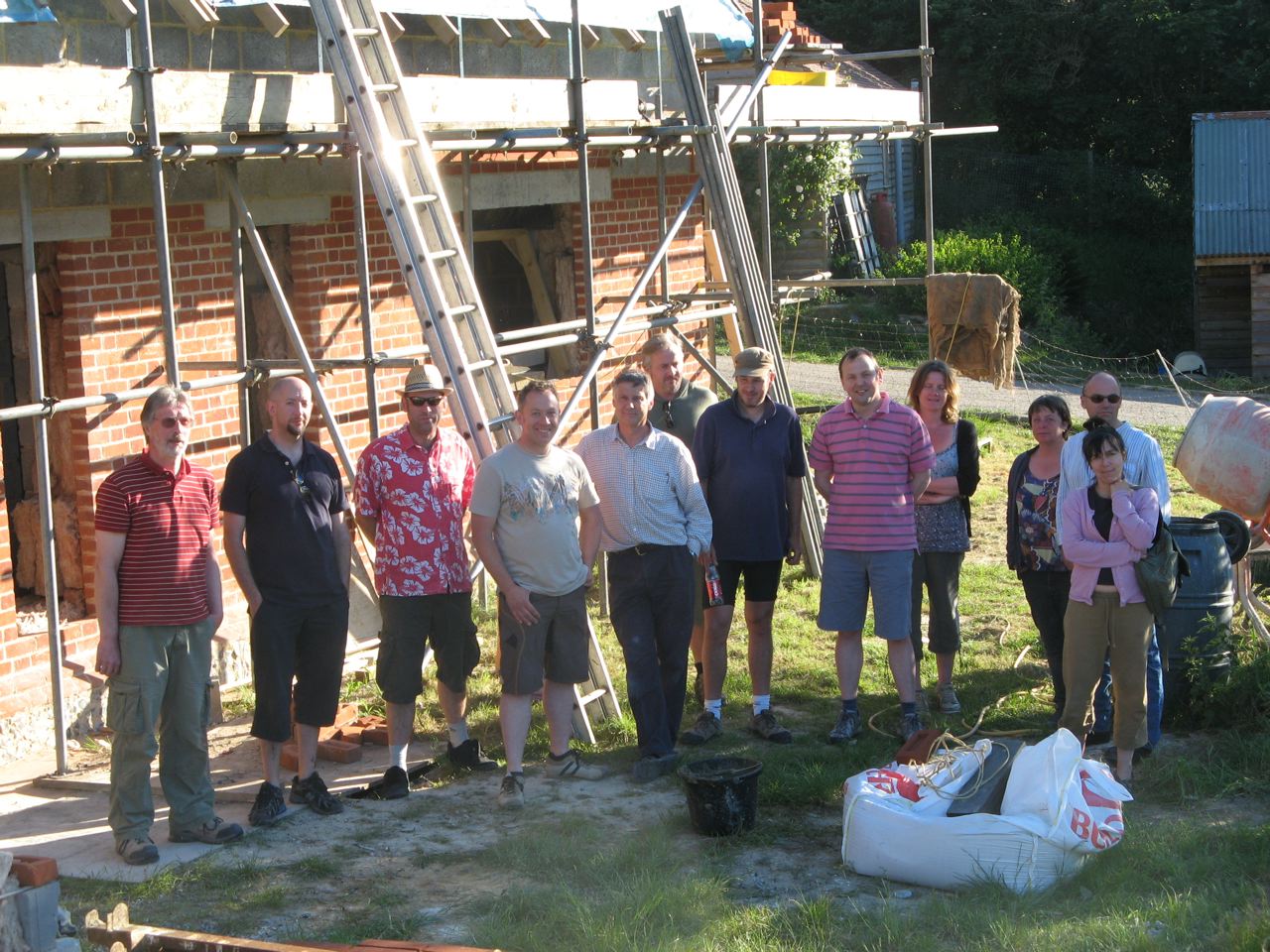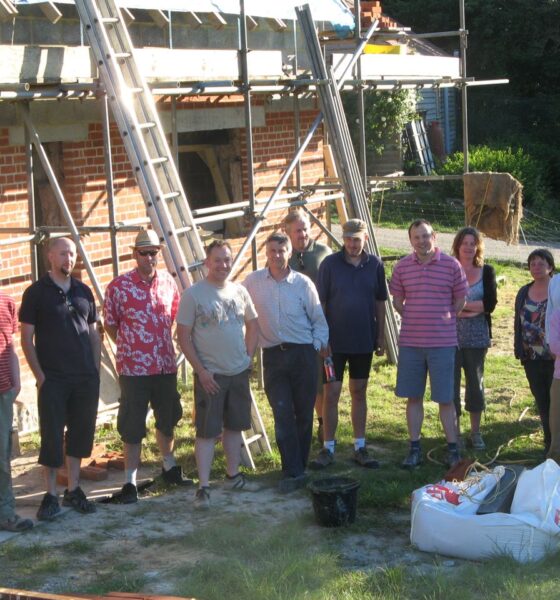

Economy
‘Sustainability is a working concept. It’s a holy grail’
Andrew Simmonds, chief executive of the Association for Environment Conscious Building (AECB), tells Blue & Green Tomorrow how the organisation’s 1,400 individual and organisational members are attempting to shift the UK onto a path of sustainable design and construction.
This article originally appeared in Blue & Green Tomorrow’s Guide to Sustainable Homes 2013.
What is environment conscious building?
It is when we build with a clear awareness of our place in the biosphere – the human ecological niche. The more we understand about the impact of materials sourcing and building practices – as well as the impact of buildings in use – the more environment conscious we become.
This obviously requires multidisciplinary thinking – and this was one of the key aims of the original group who set up the AECB and underpins AECB activity to this day.
What is the AECB’s definition of a sustainable home?
Sustainability is a working concept. It’s a holy grail – to live in balance with the natural world.
You could argue that spending an awful lot of money at a particular point in history in order to make something that is as low impact as possible, is not sustainable, because only wealthy people can do it. However many such projects do offer valuable insights into strategies and techniques, materials and products that might offer more sustainable ways of building.
The AECB tries to facilitate clear discussion of the issues, draw out what worked and what didn’t and always encourages honest sharing of experiences, emphasising the need for real world data on building performance.
There is no clear definition of what a sustainable home is, but the AECB is trying to make sense of it by concentrating on principles of robustness, integrated strategic thinking, reporting via clear performance metrics and use of ambitious and clearly defined energy and comfort standard targets.
No man is an island, so for a single isolated building to be super energy efficient and generating all its own heat, power and water (i.e. the autonomous house model) is not necessarily a sustainable solution – at scale – although it might be seen as a very green approach for that building. It’s about developing low impact new-build and refurbishment solutions that work appropriately at building, street, estate, village, town and city scale.
Is there a typical person who looks to make their home less damaging to the environment?
Probably not. AECB members represent a cross-section of people from across the industry and professions – as well as students, self-builders, tenants and owner occupiers.
People seem to start at different places. It may be a concern for the environment, their children or grandchildren; it may be their health; their need for improved comfort levels and lower bills; it may be because they love tinkering around with or exploring new technologies or materials; sometimes their own business case may lead them to adopt an environment conscious approach.
Wherever people start from, we do say quite clearly to people that the priorities are to reduce your energy demand (be as ‘lean’ as you can), and make sure you do that in a way that is healthy, safe and robust – we are very aware of unintended consequences particularly from energy efficient retrofitting of existing buildings.
We do have a social conscience at the AECB. We’re very aware of the political side of construction and particularly sustainable construction – and the social aspects to energy, climate change and built environment policy.
What does the future of the housing market look like in terms of sustainability?
Currently, it’s obviously abysmal. That goes without saying. I think a lot depends on the 2015 general election result. For the green building movement we have a very unsympathetic administration at the moment – and although a good clearout of green building codes or standards that may not be working might be attractive, the question needs to be asked, what will replace them?
The principle of enshrining green building practices in the building regulations offers a nice moment of simplicity and clarity – but they need to be more ambitious. Speaking hypothetically and with complete modesty, if the AECB was tasked with developing the next government’s sustainable built environment policy, you would see something sensible, effective and with huge economic and environmental benefit.
Currently the things we’d like to see happen are not really finding fertile ground. That probably goes for most environmentalists or climate change scientists; it’s a pretty depressing time for us at the moment. After 2015, we don’t really know what might happen, but either way I think we’re going to be going through some very rocky times for a long period.
Having said that, sensible, effective, integrated, democratic and hopeful policies would give us all a real sense of progress. All political parties need to get to grips with integrated energy and buildings policy – and to shake loose from corporate lobbying that is twisting thinking about this hugely important area and preventing development of an effective buildings, energy and climate change strategy.
Meanwhile, I think there will be a slow but constant increase in numbers of people wanting to install energy efficiency measures – led by the wealthier, by those downsizing and those retiring or retired people hunkering down for an energy expensive old age.
 Properly built or refurbished sustainable homes, with a real focus on build quality, attention to detail, energy efficiency and air quality, for example as exemplified by the Passivhaus approach, produce excellent results, and this is becoming more and more evident.
Properly built or refurbished sustainable homes, with a real focus on build quality, attention to detail, energy efficiency and air quality, for example as exemplified by the Passivhaus approach, produce excellent results, and this is becoming more and more evident.
The homes produced using the Passivhaus methodology are very comfortable. They do what they say on the tin and there is usually no significant performance gap – certainly not if fully certified. This, for the first time in the UK, represents a building methodology that delivers good, consistent results – and as such it should be invested in.
Andrew Simmonds is chief executive of the Association for Environment Conscious Building.
Further reading:
Sustainable design should change our behaviour for good
Creating a low-carbon home of your own


 Environment10 months ago
Environment10 months agoAre Polymer Banknotes: an Eco-Friendly Trend or a Groundswell?

 Environment11 months ago
Environment11 months agoEco-Friendly Home Improvements: Top 7 Upgrades for 2025

 Features9 months ago
Features9 months agoEco-Friendly Cryptocurrencies: Sustainable Investment Choices

 Features10 months ago
Features10 months agoEco-Friendly Crypto Traders Must Find the Right Exchange




























